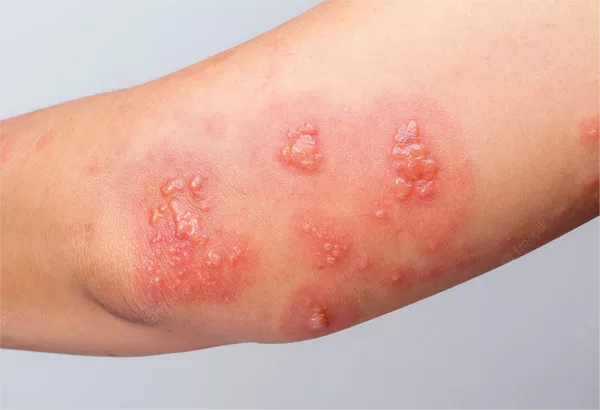Ringworm is a common fungal infection that affects the skin, scalp, and nails. It can cause itchy, red, and scaly patches that can be quite uncomfortable. Many people seek effective treatments for this condition. One product that often comes up in discussions about ringworm treatment is Fungisol. In this article, we will explore whether Fungisol can cure ringworm, how it works, and what to expect when using it.
What is Ringworm?
Ringworm, also known as tinea, is caused by fungi that thrive on keratin, a protein found in skin, hair, and nails. The term “ringworm” comes from the circular, ring-like appearance of the rash, though it has nothing to do with worms. It can affect anyone, regardless of age or health.
Types of Ringworm
There are several types of ringworm, depending on the area of the body affected:
Tinea Corporis: Affects the body.
Tinea Capitis: Affects the scalp.
Tinea Pedis: Known as athlete’s foot; affects the feet.
Tinea Cruris: Affects the groin, often referred to as jock itch.
Symptoms of Ringworm
Common symptoms of ringworm include:
Itchy Skin: The affected area often feels itchy and uncomfortable.
Red, Scaly Patches: The rash usually appears as red, inflamed patches with a scaly border.
Bald Patches: In cases of tinea capitis, the scalp may develop bald patches due to fungal infection.
Cracked Skin: In cases of athlete’s foot, the skin may crack and peel.
What is Fungisol?
Fungisol is a topical antifungal medication. It is used to treat various fungal infections, including ringworm. It contains active ingredients that target the fungi causing the infection.
How Does Fungisol Work?
Fungisol works by disrupting the cell membranes of the fungi. This action prevents the fungi from growing and reproducing. The active ingredients penetrate the skin, targeting the infection at its source.
Can Fungisol Cure Ringworm?
The effectiveness of Fungisol in treating ringworm depends on several factors, including the severity of the infection and how well the medication is used.
Active Ingredients
Fungisol contains antifungal agents, such as clotrimazole or miconazole, which are known to be effective against the fungi responsible for ringworm. These ingredients have been proven to kill fungi and help alleviate symptoms.
Clinical Studies
Several clinical studies have shown that topical antifungal treatments, including those found in Fungisol, can effectively treat ringworm. In many cases, patients see significant improvement within a week or two of consistent use.
Application
For Fungisol to be effective, it must be applied correctly. Here’s how to use it:
Clean the Affected Area: Wash the area with soap and water, and pat it dry.
Apply Fungisol: Use a thin layer of the medication on the affected area.
Frequency: Apply it as directed, usually two to three times a day.
Continue Treatment: Even if symptoms improve, continue using the medication for the full recommended duration to ensure the infection is completely eradicated.
What to Expect When Using Fungisol
Using Fungisol can lead to noticeable improvements in your ringworm condition. Here are some common experiences during treatment:
Initial Symptoms
In the first few days of treatment, you may notice a reduction in itching and discomfort. The redness may also begin to subside.
Full Recovery
Most people see significant improvement within 1-2 weeks. However, it is crucial to complete the full course of treatment to prevent recurrence.
Side Effects
Fungisol is generally well-tolerated, but some users may experience mild side effects such as:
- Skin irritation
- Redness
- Burning sensation
If these side effects persist or worsen, consult a healthcare provider.
When to Seek Medical Attention
If you notice no improvement after 2 weeks of using Fungisol, or if the infection worsens, it is essential to seek medical advice. In some cases, oral antifungal medications may be necessary for more severe infections.
Prevention of Ringworm
While treatment is essential, prevention is equally important. Here are some tips to help prevent ringworm:
Maintain Good Hygiene
Wash Hands Regularly: Regular handwashing can help reduce the spread of fungi.
Keep Skin Dry: Fungi thrive in warm, moist environments. Ensure your skin is dry, especially in areas prone to sweating.
Avoid Sharing Personal Items
Do Not Share Towels: Fungi can spread through personal items. Avoid sharing towels, clothing, or grooming tools.
Wear Breathable Fabrics
Choose Loose Clothing: Wear breathable fabrics to help keep your skin dry and cool, especially during exercise.
Manage Pets
Check Pets Regularly: Pets can carry ringworm. Regularly check your pets for signs of fungal infections.
Conclusion
Fungisol can be an effective treatment for ringworm due to its antifungal properties. While it may not work for everyone, many individuals find relief from symptoms and see improvement within a couple of weeks of proper application. Always follow the instructions provided and consult a healthcare professional if you have concerns about your condition.
Taking preventive measures is crucial to avoid ringworm recurrence. By practicing good hygiene and being cautious with shared items, you can significantly reduce your risk of infection. If you experience persistent or severe symptoms, do not hesitate to seek medical help for more extensive treatment options.
In summary, while Fungisol can indeed help cure ringworm, a combination of proper treatment and preventive practices will ensure you stay healthy and free from fungal infections.
Related topics:

























